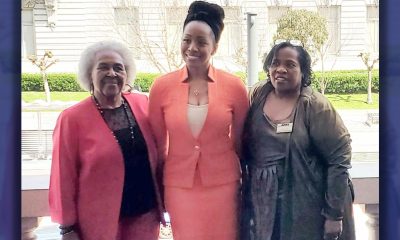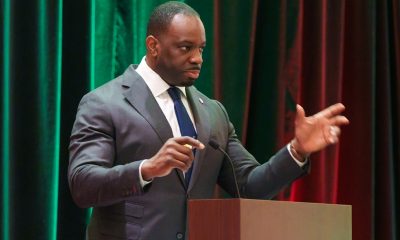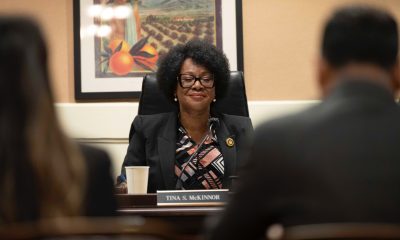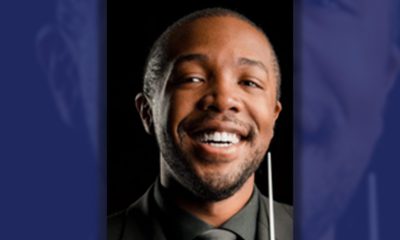Business
Equity Report Reveals Statistics on Black Women Compared to Other Races
Black women in the Golden State trail behind their counterparts from other ethnic groups in median wealth and a lower percentage of them have obtained higher education degrees. Black mothers and their babies have mortality rates that surpass women from other racial and ethnic backgrounds.
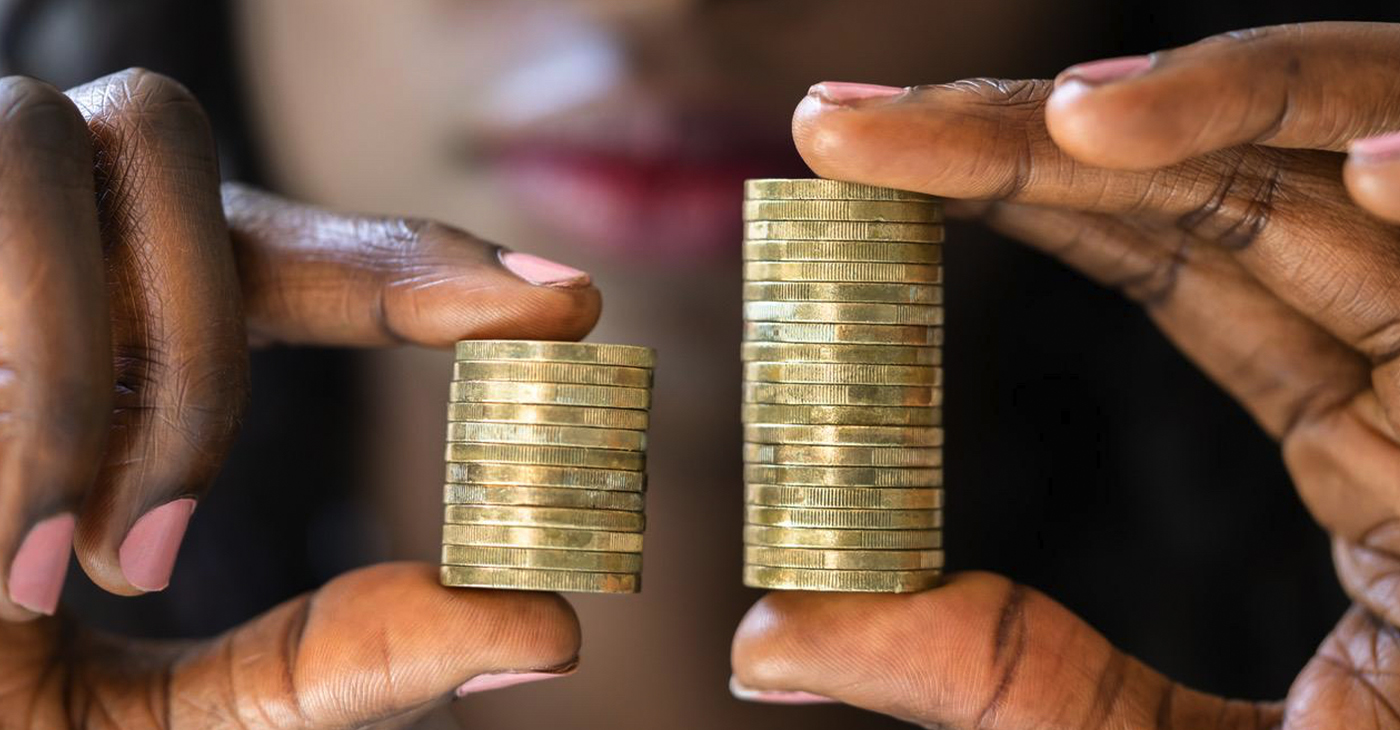
By McKenzie Jackson
California Black Media
Black women in the Golden State trail behind their counterparts from other ethnic groups in median wealth and a lower percentage of them have obtained higher education degrees. Black mothers and their babies have mortality rates that surpass women from other racial and ethnic backgrounds.
Kellie Todd Griffin, president and CEO of California Black Women’s Collective Empowerment Institute (CBWCEI) said the state of Black women in California is troubling.
“There is so much work to do,” she explained. “There is a gap with Black women. Without immediate interventions from a policy and practice transformation standpoint, we’re not going to be able to change the trajectory.”
Griffin’s remarks came a day after the Center for the Advancement of Women at Mount Saint Mary’s University released its 12th annual “Report on the Status of Women and Girls in California” on March 22.
The 40-page report, with the tagline “Advancing Equity: Leading with Meaning and Purpose,” is the Los Angeles university’s assessment of the state of women in California based on a number of social and economic indicators.
It is “what women need in order to attain agency for themselves, add meaning to their lives, and contribute fully to their families, communities, and businesses,” wrote Mount Saint Mary’s University President Ann McElaney-Johnson in the document’s opening pages.
The report highlights issues affecting women and girls in California post-COVID-19 pandemic. The trends documented pertain to women’s education, economic security, health, household labor, and wage and wealth divisions.
The paper’s authors and staff at Mount Saint Mary’s are advocates who push for changes in legislation to help women and girls in the state.
Robin L. Owens, interim director of the center and associate professor of Religious Studies at Mount Saint Mary’s, said all of the study’s findings need to be addressed.
“My personal opinion, wealth impacts everything, so that is the one that struck me the most,” she emphasized. “The differences in the wealth gap between men and women, but also between African American women and other races. That was striking.”
The wealth gap among women is vast, according to the study. For every $100 owned by a white woman, Latinas own $10, and Black women own $9.
Twenty-four percent of households led by single Black women and 25% of Latina households are more likely to live in poverty than single white (14%) and single Asian (15%) women households.
In corporate leadership, 5% of the women in management positions and CEO chairs are African American. In comparison, 46% of women in management positions are white and 86% of women CEOs are white.
Black women hold 4% of the bachelor’s degrees obtained by California women, while white women have 47%. Among women holding graduate and professional degrees, 52% are white women, whereas African American women make up only 5%.
There is a connection, Griffin stated, between Black women’s trailing in education and wealth figures.
“We’re the smallest population amongst the groups that were assessed, however we shouldn’t be 4% of the bachelor’s degree holders,” she noted. “It’s disheartening. How do you get into corporate leadership if a majority of good-paying jobs require a degree? We can’t get in the door to be able to accelerate up.”
Black women are more than four times more likely to die from pregnancy-related causes then white women, and Black babies are more than twice as likely to die within one year than white babies.
The maternal death rates of African American women and their babies are comparable to numbers from decades ago despite funds and efforts put into improving that rate for all women, Griffin said.
“That is not an improvement,” she said.
CBWCEI is focused on using the numbers from the report and other statistics they have gathered to shine a light on the challenges Black women in the state have and to uplift their voices.
The group advocated for and received state funds to create the California Black Women’s Think Tank at Cal State Dominguez Hills, which focuses solely on Black women and girls through research and leadership development. The nonprofit organization is also conducting other African American women-geared initiatives.
“We are focused on Black women, Black girls, Black joy, Black advancement,” Griffin stated. “We understand if we invest in Black women, then we invest in Black communities. We are investing in Black California.”
Owens hopes readers of the report take actions like the CBWCEI.
“I hope people read the report and really give some thoughtful consideration to how they can add to the advancement of women in general and African American women in particular,” she said.
“Even if it is in a small way. Sometimes we tend to think we have to fix the whole problem. If we could just find out in our own corner of the world, how we could make a small increase in helping African American women and women in general that would make a difference.”
Bay Area
State Controller Malia Cohen Keynote Speaker at S.F. Wealth Conference
California State Controller Malia Cohen delivered the keynote speech to over 50 business women at the Black Wealth Brunch held on March 28 at the War Memorial and Performing Arts Center at 301 Van Ness Ave. in San Francisco. The Enterprising Women Networking SF Chapter of the American Business Women’s Association (ABWA) hosted the Green Room event to launch its platform designed to close the racial wealth gap in Black and Brown communities.
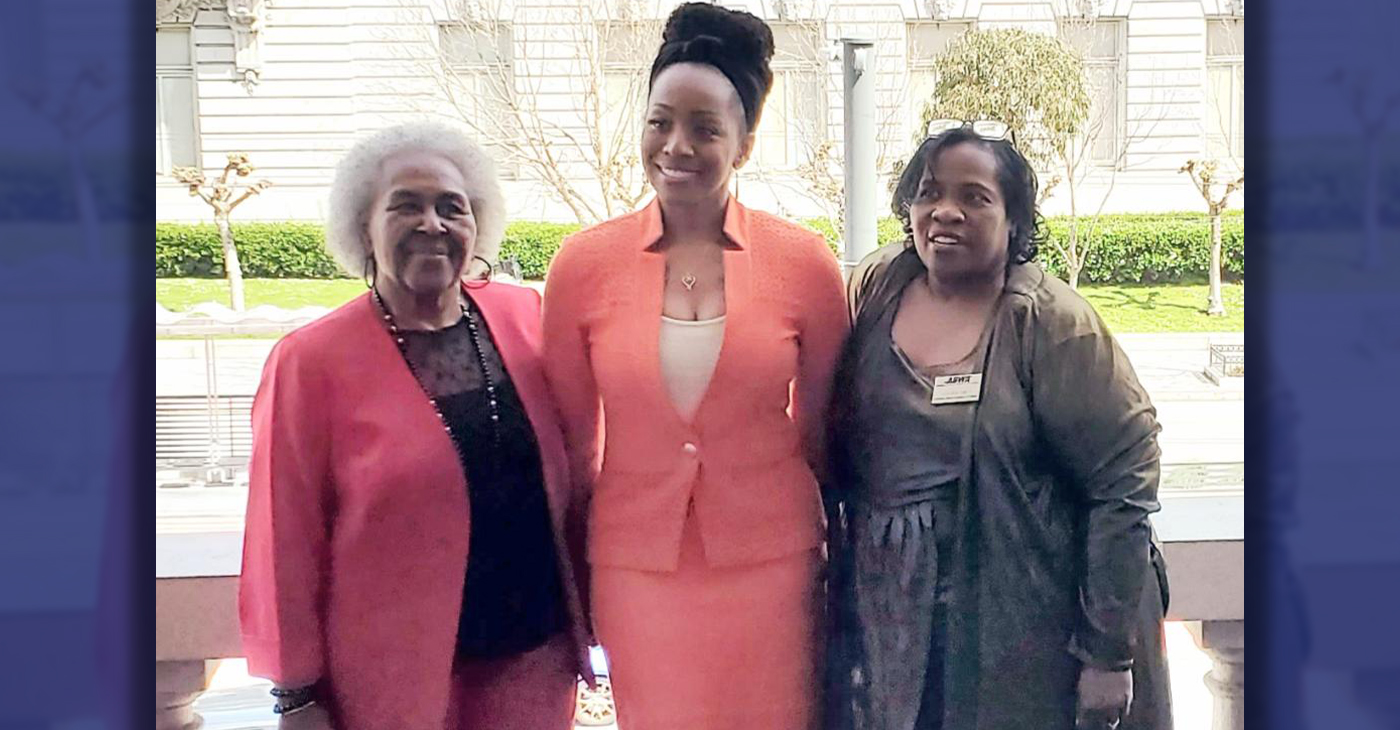
By Carla Thomas
California State Controller Malia Cohen delivered the keynote speech to over 50 business women at the Black Wealth Brunch held on March 28 at the War Memorial and Performing Arts Center at 301 Van Ness Ave. in San Francisco.
The Enterprising Women Networking SF Chapter of the American Business Women’s Association (ABWA) hosted the Green Room event to launch its platform designed to close the racial wealth gap in Black and Brown communities.
“Our goal is to educate Black and Brown families in the masses about financial wellness, wealth building, and how to protect and preserve wealth,” said ABWA San Francisco Chapter President LaRonda Smith.
ABWA’s mission is to bring together businesswomen of diverse occupations and provide opportunities for them to help themselves and others grow personally and professionally through leadership, education, networking support, and national recognition.
“This day is about recognizing influential women, hearing from an accomplished woman as our keynote speaker and allowing women to come together as powerful people,” said ABWA SF Chapter Vice President Velma Landers.
More than 60 attendees dined on the culinary delights of Chef Sharon Lee of The Spot catering, which included a full soul food brunch of skewered shrimp, chicken, blackened salmon, and mac and cheese.
Cohen discussed the many economic disparities women and people of color face. From pay equity to financial literacy, Cohen shared not only statistics, but was excited about a new solution in motion which entailed partnering with Californians for Financial Education.
“I want everyone to reach their full potential,” she said. “Just a few weeks ago in Sacramento, I partnered with an organization, Californians for Financial Education.
“We gathered 990 signatures and submitted it to the [California] Secretary of State to get an initiative on the ballot that guarantees personal finance courses for every public school kid in the state of California.
“Every California student deserves an equal opportunity to learn about filing taxes, interest rates, budgets, and understanding the impact of credit scores. The way we begin to do that is to teach it,” Cohen said.
By equipping students with information, Cohen hopes to close the financial wealth gap, and give everyone an opportunity to reach their full financial potential. “They have to first be equipped with the information and education is the key. Then all we need are opportunities to step into spaces and places of power.”
Cohen went on to share that in her own upbringing, she was not guided on financial principles that could jump start her finances. “Communities of color don’t have the same information and I don’t know about you, but I did not grow up listening to my parents discussing their assets, their investments, and diversifying their portfolio. This is the kind of nomenclature and language we are trying to introduce to our future generations so we can pivot from a life of poverty so we can pivot away and never return to poverty.”
Cohen urged audience members to pass the initiative on the November 2024 ballot.
“When we come together as women, uplift women, and support women, we all win. By networking and learning together, we can continue to build generational wealth,” said Landers. “Passing a powerful initiative will ensure the next generation of California students will be empowered to make more informed financial decisions, decisions that will last them a lifetime.”
Business
Black Business Summit Focuses on Equity, Access and Data
The California African American Chamber of Commerce hosted its second annual “State of the California African American Economy Summit,” with the aim of bolstering Black economic influence through education and fellowship. Held Jan. 24 to Jan. 25 at the Westin Los Angeles Airport Hotel, the convention brought together some of the most influential Black business leaders, policy makers and economic thinkers in the state. The discussions focused on a wide range of economic topics pertinent to California’s African American business community, including policy, government contracts, and equity, and more.
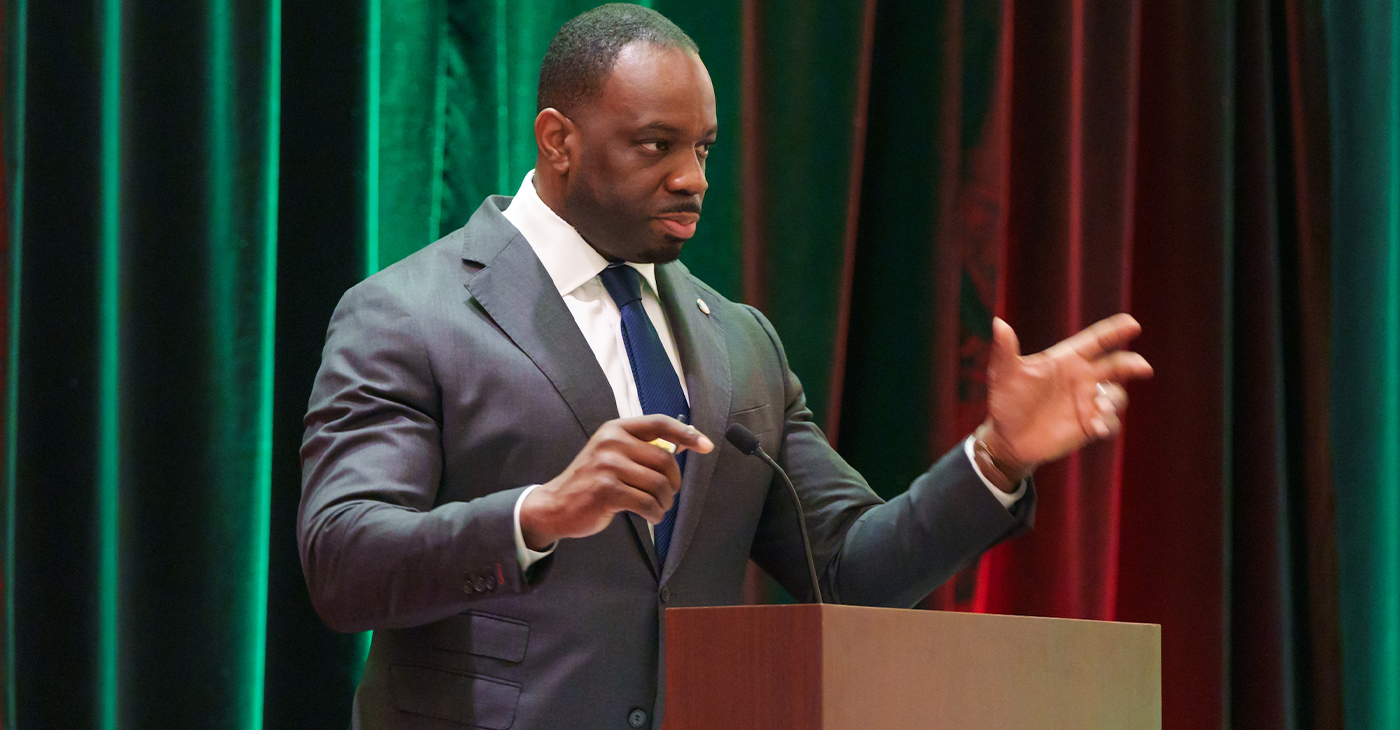
By Solomon O. Smith, California Black Media
The California African American Chamber of Commerce hosted its second annual “State of the California African American Economy Summit,” with the aim of bolstering Black economic influence through education and fellowship.
Held Jan. 24 to Jan. 25 at the Westin Los Angeles Airport Hotel, the convention brought together some of the most influential Black business leaders, policy makers and economic thinkers in the state. The discussions focused on a wide range of economic topics pertinent to California’s African American business community, including policy, government contracts, and equity, and more.
Toks Omishakin, Secretary of the California State Transportation Agency (CALSTA) was a guest at the event. He told attendees about his department’s efforts to increase access for Black business owners.
“One thing I’m taking away from this for sure is we’re going to have to do a better job of connecting through your chambers of all these opportunities of billions of dollars that are coming down the pike. I’m honestly disappointed that people don’t know, so we’ll do better,” said Omishakin.
Lueathel Seawood, the president of the African American Chamber of Commerce of San Joaquin County, expressed frustration with obtaining federal contracts for small businesses, and completing the process. She observed that once a small business was certified as DBE, a Disadvantaged Business Enterprises, there was little help getting to the next step.
Omishakin admitted there is more work to be done to help them complete the process and include them in upcoming projects. However, the high-speed rail system expansion by the California High-Speed Rail Authority has set a goal of 30% participation from small businesses — only 10 percent is set aside for DBE.
The importance of Diversity, Equity and Inclusion (DEI) in economics was reinforced during the “State of the California Economy” talk led by author and economist Julianne Malveaux, and Anthony Asadullah Samad, Executive Director of the Mervyn Dymally African American Political and Economic Institute (MDAAPEI) at California State University, Dominguez Hills.
Assaults on DEI disproportionately affect women of color and Black women, according to Malveaux. When asked what role the loss of DEI might serve in economics, she suggested a more sinister purpose.
“The genesis of all this is anti-blackness. So, your question about how this fits into the economy is economic exclusion, that essentially has been promoted as public policy,” said Malveaux.
The most anticipated speaker at the event was Janice Bryant Howroyd known affectionately to her peers as “JBH.” She is one of the first Black women to run and own a multi-billion-dollar company. Her company ActOne Group, is one of the largest, and most recognized, hiring, staffing and human resources firms in the world. She is the author of “Acting Up” and has a profile on Forbes.
Chairman of the board of directors of the California African American Chamber of Commerce, Timothy Alan Simon, a lawyer and the first Black Appointments Secretary in the Office of the Governor of California, moderated. They discussed the state of Black entrepreneurship in the country and Howroyd gave advice to other business owners.
“We look to inspire and educate,” said Howroyd. “Inspiration is great but when I’ve got people’s attention, I want to teach them something.”
Activism
Oakland Post: Week of April 17 – 23, 2024
The printed Weekly Edition of the Oakland Post: Week of April 17 – 23, 2024

To enlarge your view of this issue, use the slider, magnifying glass icon or full page icon in the lower right corner of the browser window. ![]()
-

 Activism4 weeks ago
Activism4 weeks agoOakland Post: Week of March 27 – April 2, 2024
-

 #NNPA BlackPress4 weeks ago
#NNPA BlackPress4 weeks agoCOMMENTARY: D.C. Crime Bill Fails to Address Root Causes of Violence and Incarceration
-

 #NNPA BlackPress4 weeks ago
#NNPA BlackPress4 weeks agoFrom Raids to Revelations: The Dark Turn in Sean ‘Diddy’ Combs’ Saga
-

 #NNPA BlackPress4 weeks ago
#NNPA BlackPress4 weeks agoCOMMENTARY: Lady Day and The Lights!
-

 #NNPA BlackPress4 weeks ago
#NNPA BlackPress4 weeks agoMayor, City Council President React to May 31 Closing of Birmingham-Southern College
-

 #NNPA BlackPress4 weeks ago
#NNPA BlackPress4 weeks agoBaltimore Key Bridge Catastrophe: A City’s Heartbreak and a Nation’s Alarm
-

 #NNPA BlackPress4 weeks ago
#NNPA BlackPress4 weeks agoBaltimore’s Key Bridge Struck by Ship, Collapses into Water
-

 #NNPA BlackPress4 weeks ago
#NNPA BlackPress4 weeks agoBeloved Actor and Activist Louis Cameron Gossett Jr. Dies at 87

